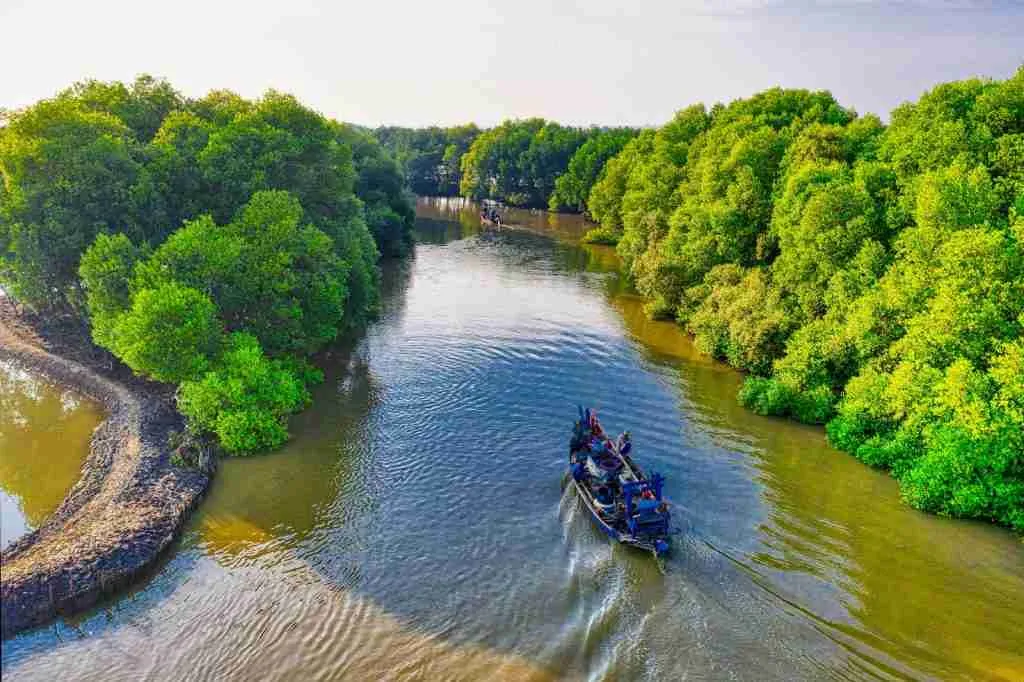27 Facts About The Amazon River (Let’s Dive In)
-
The Amazon River has no bridges across its main stretch due to its remote, forested terrain.
-
An underground river, the Hamza, mirrors the Amazon’s length 4 km beneath it.
-
The Amazon once flowed westward, until the Andes rose and reversed its direction.
-
It releases so much freshwater that it lowers ocean salinity over 300 km offshore.
-
The Amazon basin includes over 1,100 tributaries, with 17 over 1,000 km long.
-
Some areas of the Amazon are so remote, they’re still unmapped or unexplored.
-
The Amazon delta is so large it includes the world’s biggest river island, Marajó.
-
At its widest in the wet season, the river can span over 48 kilometers across.
-
The Amazon hosts the Pororoca, a surfable tidal wave that travels upstream!
-
Pink river dolphins blush more when excited or during mating seasons.
-
You can literally see where two rivers meet—without mixing—in the “Meeting of Waters.”
-
Some Amazon fish, like the arapaima, can grow over 3 meters and breathe air.
-
The Amazon is home to the electric eel, which can zap prey with 600 volts.
-
Piranhas, often feared, are actually shy scavengers—not constant attackers.
-
The Amazon’s wildlife includes tree-dwelling frogs and flying fish.
Table of Contents
1. The Amazon River’s Length Debate.
The Amazon River is often cited as the second-longest river globally, but some argue it might outstretch the Nile. Measurements range from 6,275 km to 6,992 km, compared to the Nile’s 5,499 km to 7,088 km.
A 2008 study by the Brazilian Institute for Space Research suggested the Amazon could be longer, at 6,992 km, if measured from Apacheta Creek. The debate hinges on defining the river’s source and mouth, making it a topic of ongoing scientific discussion.
2. The River with the Largest Volume.
No river carries more water than the Amazon, which accounts for about one-fifth of all freshwater flowing into Earth’s oceans. Its average discharge is roughly 209,000 cubic meters per second, peaking at 300,000 during the rainy season.
This massive flow creates a freshwater plume that dilutes the Atlantic Ocean’s salinity over 100 miles from shore. It even raises Caribbean sea levels by about 3 cm, showcasing its global influence.
3. The Amazon Rainforest is Home to around 30 million people.
Spread across nine countries, the Amazon Rainforest is home to an astounding 30 million people. Among this large population, roughly 2.6 million are native or Indigenous inhabitants.
These remarkable individuals possess a complex knowledge of the region’s rich flora and fauna and maintain many ancestral customs that have been passed down for centuries. Like the Ganges, the Amazon River is a lifeline for numerous communities along its banks.
The Amazon provides many goods and services humans use worldwide that directly contribute to our planet’s biodiversity and evolution cycle.
4. The Amazon River Basin covers over 6.7 million sq km (2.6 million sq miles).
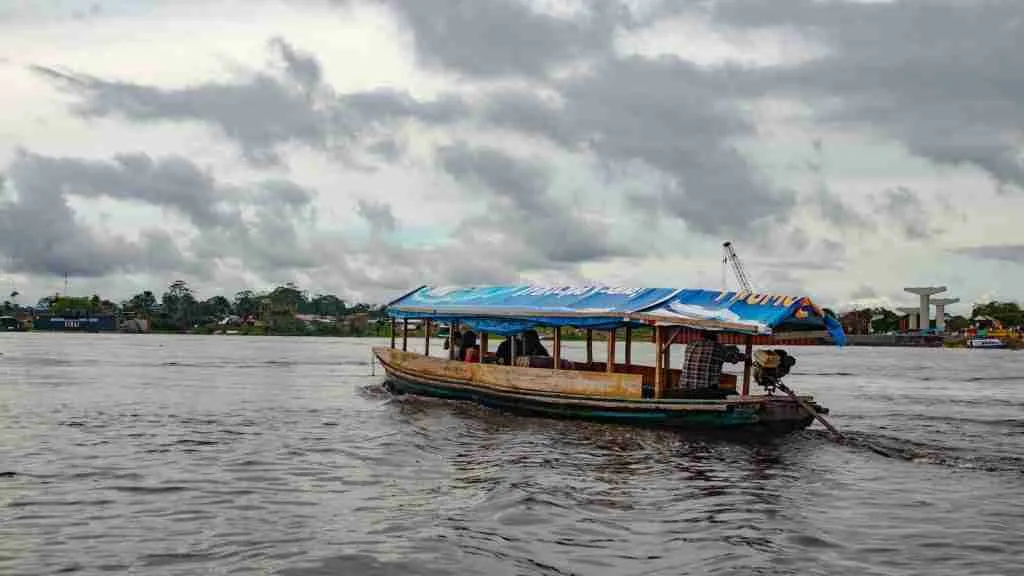
READ ALSO: 23 Fun Facts About the Missouri River (Missouri Marvels)
The Amazon River Basin is an impressive geographic structure. Spanning over 6.7 million square kilometers, it surpasses every other watershed on the planet: a staggering 2.6 million square miles of potent natural splendor.
It doesn’t just hold the title of biggest: it’s also home to a vast array of extraordinary flora and fauna, with approximately one-tenth of all species known to humankind living exclusively within the resident habitat of Amazonian air and textiles.
5. The Vast Amazon Basin.
The Amazon River basin spans about 7 million square kilometers, covering roughly 40% of South America. It touches nine countries, including Brazil, Peru, and Colombia, making it the world’s largest river basin.
This immense area supports the Amazon Rainforest, home to millions of species, and sustains millions of people, including Indigenous communities. Its size and diversity make it a critical player in global climate regulation.
6. A River That Flows Through Multiple Countries.
The main stem of the Amazon River runs through Peru, Colombia, and Brazil, while its tributaries extend into six more countries. These include Ecuador, Bolivia, Venezuela, Guyana, Suriname, and French Guiana.
This transboundary nature fosters cultural exchange but also demands international cooperation for conservation. The river connects diverse communities, creating a shared regional identity across South America.
7. Biodiversity Hotspot.
The Amazon River and its rainforest host over a million species, including 2,500 fish species and countless plants. Many, like the pink river dolphin, are found nowhere else on Earth.
This biodiversity fuels scientific discoveries, with plants potentially holding medicinal secrets. Yet, deforestation threatens this natural treasure, making conservation vital to preserve this unique ecosystem.
8. Vicente Yanez Pinzon, a Spanish conquistador, was the first European to discover the Amazon in 1500.
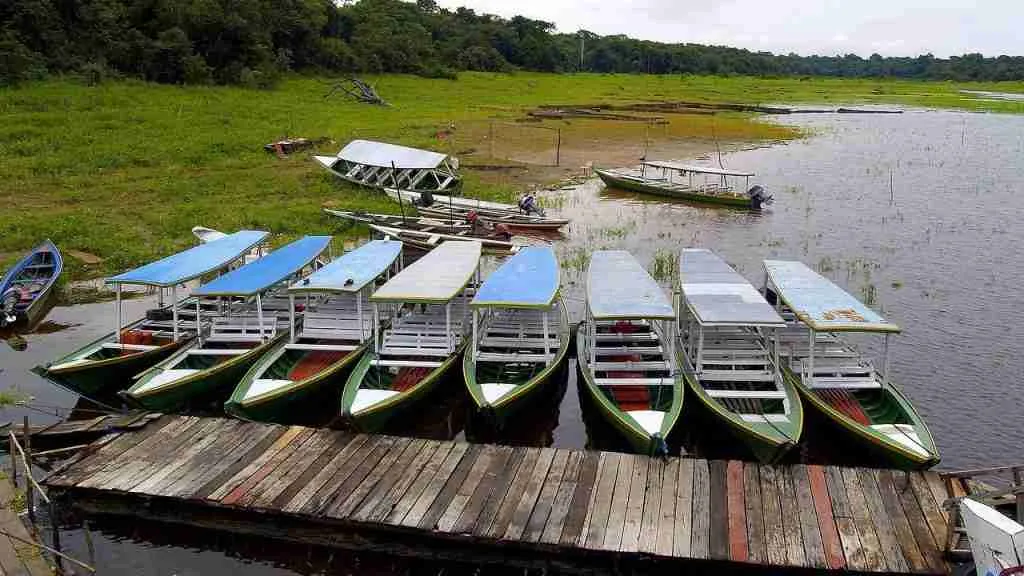
READ ALSO: 25 Facts About The Mississippi River You Didn’t Know
In 1500, a Spanish explorer, Vicente Yanez Pinzon, was the first from Europe to find the Amazon River. He was far out at sea when he found he was sailing in freshwater, not salt water. This made him curious, so he sailed closer to the land.
There, he found where the Amazon River starts. This was a big deal because it was the first time someone from Europe saw this huge and important river.
9. The River’s Changing Width.
The Amazon River’s width shifts dramatically, from 1.6 km in the dry season to over 48 km during the wet season. Heavy rainfall causes this seasonal swelling, transforming the river’s appearance.
These floods create “várzea” habitats, where inundated forests support unique wildlife. Local communities adapt, using flooded areas for fishing and transport, showcasing the river’s dynamic role.
10. The Amazon River is the Largest River by Volume in the World.
The Amazon River is known for its might and volume – it stands as the Largest River by Volume in the World! A marvel of beauty and power, it carries more water than any other river on Earth.
This 600,000-kilometer-long river winds through 9 countries: Brazil, Bolivia, Colombia, Ecuador, Guyana, Peru, Suriname, and Venezuela – some of which are totally dependent on this mighty river’s waters for sustenance and transportation.
11. The Amazon’s Freshwater Plume.
The Amazon River creates a massive freshwater plume extending 400 km into the Atlantic Ocean. This plume, 100-200 km wide, carries freshwater far from the river’s mouth.
It alters ocean salinity, creating unique marine habitats and influencing global ocean currents. This phenomenon underscores the river’s far-reaching impact on Earth’s ecosystems.
12. Amazon River estimated that 1/5th of all freshwater fish species inhabit the Amazon River.
READ ALSO: 22 Facts About The Indus River Unveiled
These highly diverse fish species have made the Amazon their own unique ecosystem for centuries. The stunning variety that can be found around these waters attracts naturalists from across the globe to conduct research every year who keep discovering remarkable new populations previously unheard of.
There is so much satisfaction in unraveling the mysteries that unravel in living these majestic rivers, creating a treasurable moment for those in awe of this incredible spectrum of life.
13. Seasonal Flooding and Its Impact.
The Amazon River’s water level rises over 9 meters during the wet season, flooding vast forest areas. These floods turn landscapes into temporary wetlands, reshaping the region.
Floods enrich soil nutrients and support fish migrations, vital for local ecosystems. Communities rely on these cycles for fishing and navigation, adapting to the river’s rhythm.
14. Home to Unique Species.
The Amazon River shelters extraordinary creatures like the pink river dolphin and giant pirarucu fish. These species thrive in the river’s unique, murky waters.
They play key roles in the ecosystem, with dolphins controlling fish populations. Protecting these species is essential to maintain the river’s ecological balance.
15. The River’s Role in Global Carbon Storage.
The Amazon basin, with its rainforest, acts as a massive carbon sink, absorbing vast amounts of carbon dioxide. This helps regulate the global climate significantly.
Deforestation threatens this function, releasing stored carbon and worsening climate change. Preserving the Amazon is crucial for maintaining its role in Earth’s climate system.
16. The Amazon River is Home to some of the Most Diverse Ecosystems on the planet.
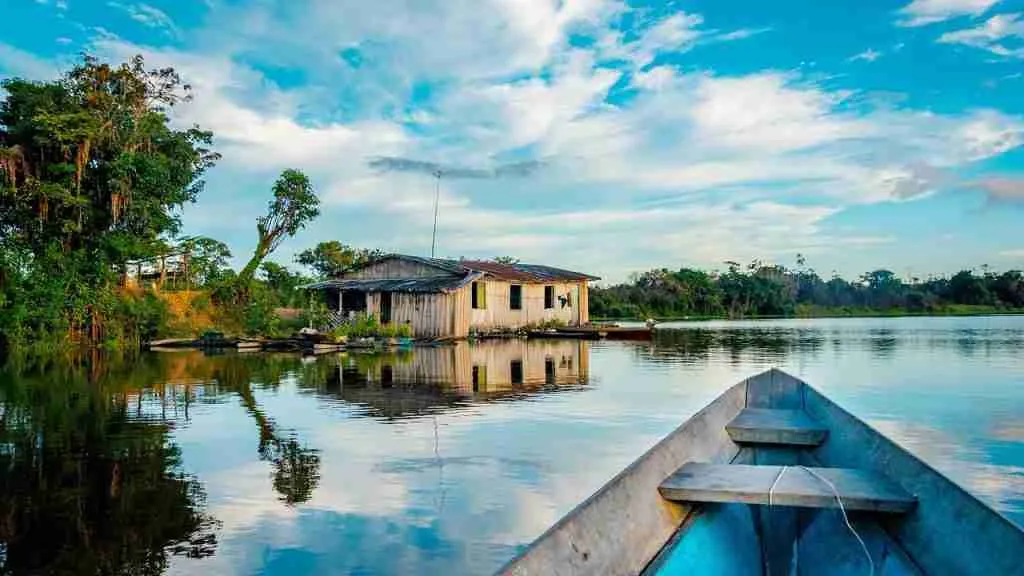
READ ALSO: 27 Facts About the Ganges River (Let’s Dive In)
The Amazon River is an incredibly versatile environment. Home to some of the world’s most spectacular and diverse habitats, it encompasses wetlands, flooded forests, savannas, and grassy fields alike.
Utilizing this entire range of ecosystems creates a fascinating mix of life – new species and biodiversity born of such biological diversity far surpassing what exists in other river systems nearby.
17. The Amazon Basin is estimated to harbor around 10% of all known species on Earth.
The Amazon Basin is home to roughly 10% of all known species on Earth. This breaks down to a staggering 2 million unique species across the area.
This number is truly remarkable, as it provides insight into just how rich and biodiverse this region is. In fact, its exuberant levels of life could mean some yet unknown species remain in obscurity.
18. It’s believed that the world’s largest snake can be found in the Amazon River.
The Amazon is home to some of the most impressive creatures on Earth. Notably, the anaconda stands out among them all with its record-breaking size.
It’s believed that the largest snakes, anacondas, have been measured at up to 10 meters in length- equivalent to 33 feet. With such immense size and power, the anaconda is surely one of the top predators in this rich, vibrant ecosystem.
19. Named After Mythical Warriors.
The Amazon River got its name from Spanish explorer Francisco de Orellana, who likened local female warriors to Greek mythology’s Amazons. He encountered them in 1541.
This historical anecdote adds a layer of intrigue to the river’s identity. It reflects the cultural richness of the region’s Indigenous peoples.
20. The Amazon River source can be traced to two major streams: the Ucayali and Marañón rivers in Peru.
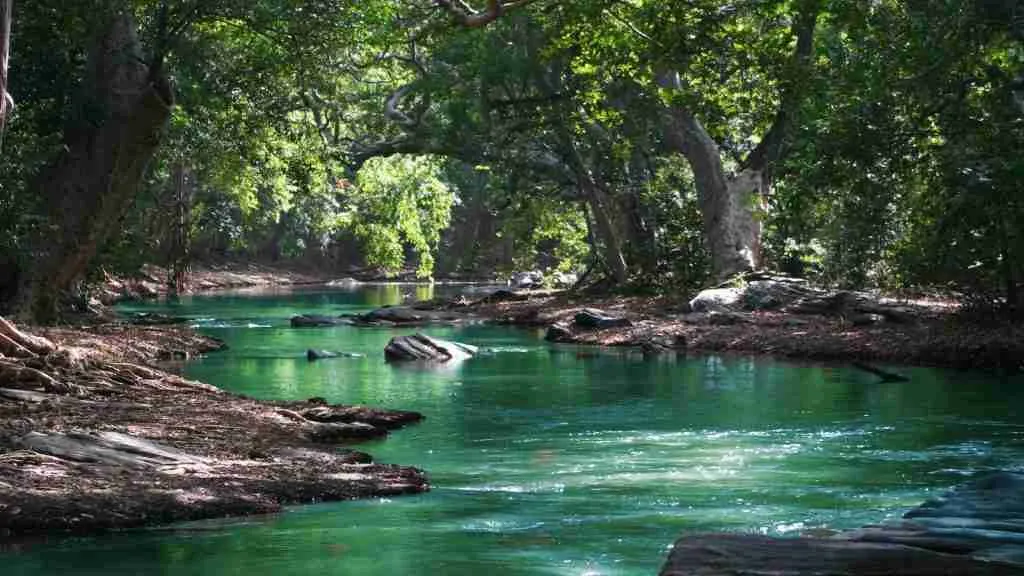
READ ALSO: 24 Facts About The Nile River (You Must Know)
The Amazon River has its source in Peru, deep in the Andes. The two primary contributing elements to its originating headwaters are the Ucayali River and the Marañón River.
These two rivers form at the meeting point of Vilcabamba’s Chinchipe Valley and Río Marañón’s Valley in Peru’s mountainous region.
This marks the start of an extensive water system that traverses a lengthy stretch of South America before joining with Brazil’s Tocatins River to assemble its mightiest of flows as it makes bends toward–and into–the Riviera Atlântica.
21. The Amazon River is the second longest river in the world.
With a length of 6,833 kilometers, the Amazon River is an immense landscape spanning across continents. It is the second longest river in the globe after the Nile in Africa, measuring a whopping 6,853 kilometers.
This long, winding, meandering waterway has captivated many for centuries with its dense collection of plants and animals found only in tropical environments.
22. Indigenous Languages.
About 300 Indigenous languages are spoken in the Amazon region. These languages reflect the cultural diversity of its 350 ethnic groups.
Many of these groups remain isolated, preserving ancient traditions. Their languages are a vital part of the Amazon’s cultural heritage.
23. Deforestation Threat.
Since 2000, rainfall has declined across 69% of the Amazon forest due to deforestation. This loss threatens the river’s ecosystem and global climate.
Deforestation releases stored carbon, exacerbating climate change. Conservation efforts are crucial to protect this vital region.
24. Largest Drainage System.
The Amazon River forms the world’s largest drainage system by volume and area. It drains about one-third of South America’s landmass.
This system supports diverse habitats and millions of people. Its scale underscores the river’s critical role in regional ecology.
25. Mammal and Bird Diversity.
The Amazon hosts countless mammals, birds, amphibians, and reptiles. Species like jaguars and harpy eagles thrive in its forests.
These animals are vital to the ecosystem, from predation to seed dispersal. Their presence highlights the Amazon’s ecological richness.
26. Impacts Sea Levels.
The Amazon’s freshwater flow raises Caribbean sea levels by about 3 cm. This effect stems from its massive discharge into the Atlantic.
The Caribbean Current carries this freshwater, influencing regional marine ecosystems. This demonstrates the river’s global reach.
27. Flooded Forests.
During the wet season, the Amazon’s floods create vast flooded forests called “várzea.” These areas support unique plant and animal life.
These forests are breeding grounds for fish and other species. They also provide resources for local communities during floods.
FAQs
The Amazon River can reach depths of up to 100 meters (330 feet) in some areas. On average, it is about 20 to 50 meters deep. Its depth varies depending on the region and season.
The river’s width changes seasonally, from about 1.6 kilometers in the dry season. During the rainy season, it can expand to over 48 kilometers wide. This dramatic swelling creates vast flooded areas.
The Amazon River is freshwater. It carries roughly 20% of the world’s freshwater that flows into the oceans. Its massive flow forms a freshwater plume that extends into the Atlantic Ocean.
The Amazon is about 6,400 to 7,000 kilometers long. Its basin covers roughly 7 million square kilometers, nearly 40% of South America. It is one of the largest river systems in the world.
The Amazon is known for having the largest water volume of any river. It flows through the Amazon Rainforest, a major biodiversity hotspot. It is home to unique species like pink river dolphins and giant fish.
Its immense size and water volume make it stand out globally. The river flows through nine countries and supports diverse ecosystems. It also has no bridges over its main channel, highlighting its wild nature.
The Amazon discharges around 209,000 cubic meters of water per second on average. During peak flow, this can rise above 300,000 cubic meters per second. It carries more water than any other river in the world.

